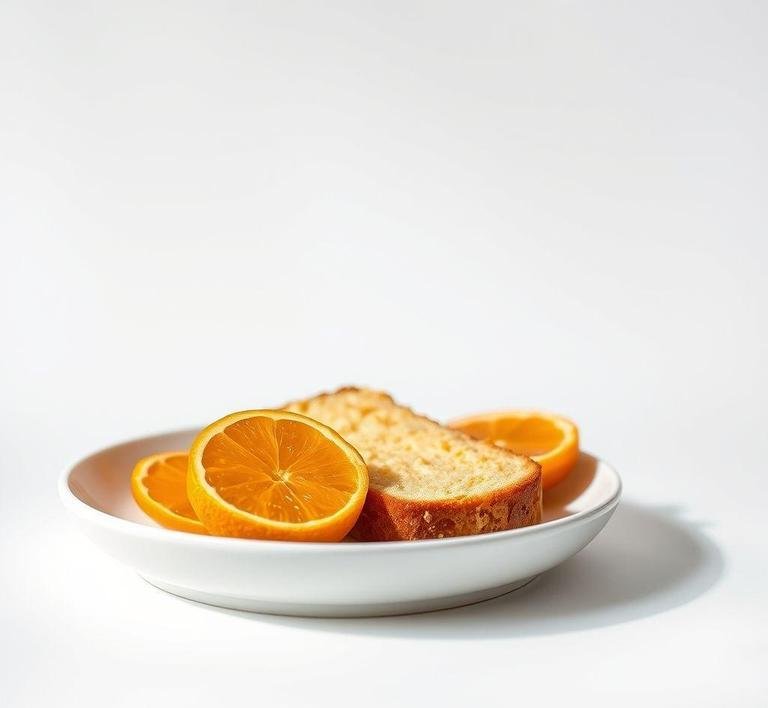Nigella’s Satsuma Cake isn’t just a recipe. It’s a little spell she cast in her inimitable way – equal parts cozy, clever and citrus-laced nostalgia. Imagine this: it’s late December, your windows are foggy and there’s the unmistakable scent of orange peel and cardamom clinging to your sweater. That’s the mood this cake was born for.
The cake itself is a flourless, almond-based dream, moist and rich from whole, simmered satsumas – peel and all – blended straight into the batter. It’s gluten-free by design, not by trend and that makes it feel like a secret between you and your oven. The texture? Dense but not heavy. Moist but not greasy. Sweet but balanced with that bright citrus kick that only comes from using the whole fruit.
The first time I made it, I did so more out of curiosity than confidence. Whole fruits in a cake? Sounded bonkers. But as usual, Nigella knew what she was doing. It didn’t just work. it felt like I’d found an old family recipe I never knew I needed.
Nigella Satsuma Cake Recipe
Ingredients Needed

The ingredients list is short, familiar and surprisingly forgiving. Here’s what you’ll need to bring this cake to life:
- 3 small satsumas (or clementines). about 375g total. Washed, left whole, peel included.
- 6 large eggs
- 225g ground almonds – also known as almond meal.
- 225g caster sugar – if you only have granulated, blitz it in a blender for a few seconds.
- 1 tsp baking powder
That’s it. No butter. No oil. The magic comes from the natural oils in the citrus skin and the richness of the ground almonds. When you first mix the batter, it’s got this earthy, almost rustic texture. Don’t be tempted to smooth it out too much. its personality is in the slight graininess.
A note on the satsumas: Choose ones that feel heavy for their size. The heavier, the juicier. I once used slightly dry ones and the cake didn’t quite sing the same way.
Equipment Needed
You don’t need fancy gear to pull this off – in fact, the more low-fi, the better. Here’s what I use:
- Medium saucepan – for simmering the satsumas.
- Food processor or blender. to blitz the whole fruit into a fragrant paste.
- Mixing bowl – if you’re not mixing in the food processor.
- Spatula – to scrape every bit of batter into the tin.
- Springform cake tin – ideally 8 inches (20 cm), greased and lined.
- Wire cooling rack – the cake needs to breathe when it comes out.
That’s it. I once made it with a stick blender and a deep bowl when I was away visiting a friend. a little messier but still turned out beautifully.
Instructions To Make Nigella Lawson’s Satsuma Cake
Let’s walk through it slowly. this isn’t a rushed recipe. You’re not just throwing ingredients into a bowl; you’re crafting something aromatic, with soul.
Step 1: Simmer The Satsumas
Pop your whole satsumas (yes, peel and all) into a saucepan. Cover with cold water and bring to a boil. Then lower the heat and simmer, lid slightly ajar, for about 2 hours. The kitchen fills with this low, citrusy hum. not sharp but warm and rounded, like marmalade on toast.
Once they’re done, drain and let them cool. Don’t rush this part. I once got impatient and blended them too hot. scrambled the eggs in the next step. Learn from me.
Step 2: Blend Into A Pulp
Cut the cooled satsumas in half, remove any seeds (there usually aren’t many) and toss everything – flesh, pith, peel – into your food processor. Blitz until smooth. The texture should look like a thick purée, almost like baby food. But the smell? Like walking through a citrus grove at golden hour.
Step 3: Mix The Batter
Add your eggs, sugar, ground almonds and baking powder to the citrus purée. Pulse until everything’s just combined. Don’t overdo it – you want a rustic consistency.
Step 4: Bake
Pour the batter into your greased and lined springform tin. Bake at 190°C (375°F) for about 50-60 minutes. Check after 40 minutes. if the top is browning too fast, cover loosely with foil.
It’s ready when a skewer inserted into the middle comes out mostly clean. A little stickiness is okay. this cake is meant to be moist.
Let it cool in the tin before turning it out onto a rack. And then, the hardest part: waiting. I like to leave it for at least a few hours to settle or even overnight. The flavor deepens, like a good story told again.
What I Learnt
This cake taught me to trust flavor over fuss. It reminded me that not everything has to be creamed, sifted or separated. Sometimes, the most unexpected combinations. whole fruit and almonds, no fat, no flour. yield the most memorable results.
It also taught me patience. Two hours to simmer fruit felt outrageous the first time. But that slow, meditative step became the heart of the process for me. It was a reason to stay home, to let something bubble quietly on the stove while I read or just listened to the rain.
The biggest lesson? Beauty in baking isn’t always about perfection. The cracked top, the dense crumb, the slightly uneven edges. they’re part of its charm. It’s a cake with character. A cake with history, even if it’s only your own.
FAQs
What Makes Nigella Lawson’s Satsuma Cake So Special?
The satsuma cake is incredibly moist and packed with citrus flavor, thanks to fresh satsumas (or clementines) that are blitzed with the skin on. The blend of tangy fruit with the soft, buttery cake base is what makes it so addictive. Plus, it’s gluten-free, which is a nice bonus if you’re catering to different diets!
Can I Use A Different Citrus Fruit If I Can’t Find Satsumas?
Totally! While satsumas are ideal because of their sweet, easy-to-peel nature, you could swap them out for other citrus fruits like clementines or even mandarins. Just keep an eye on the sweetness-some oranges might be a little more tart, and you may want to adjust the sugar accordingly.
Do I Need A Special Pan To Bake Nigella’s Satsuma Cake?
Nope, you don’t need anything fancy! A regular round cake pan works just fine, but make sure to line it properly with parchment paper or grease it well to avoid sticking. This cake tends to be a bit delicate when it comes to turning it out, so a good lining is key for easy release.


